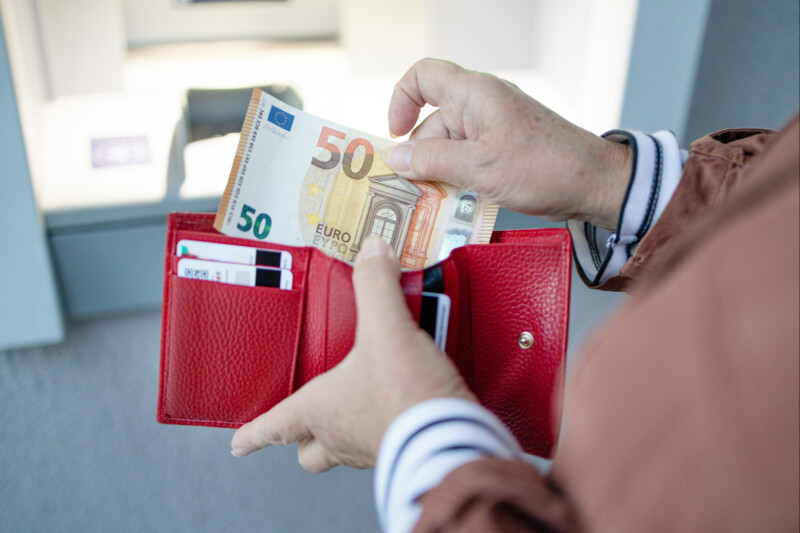D’après un rapport de la Banque centrale européenne publié le 20 décembre, l’utilisation du cash continue de reculer dans la zone euro. La valeur totale des paiements en espèces dans les commerces est désormais inférieure à celle des paiements par carte bancaire.
Les paiements par carte bancaire en nette progression
Entre 2019, année de publication de la précédente enquête de la Banque centrale européenne (BCE) sur les habitudes de paiement des ménages de la zone euro, et 2022, les paiements en espèces en magasin ont considérablement reculé.
Alors qu’ils représentaient 79 % des transactions dans les commerces en 2016 puis 72 % en 2019, ils ont chuté à 59 %, ce qui confirme l’accélération du déclin du cash, une des conséquences de la pandémie de Covid-19.
En parallèle, les paiements par carte bancaire ont augmenté, passant de 19 % des transactions en magasin en 2016 à 25 % en 2019, et à 34 % en 2022. Le paiement mobile a également progressé, mais il reste encore peu utilisé dans les commerces : les transactions via des applications de paiement ont été multipliées par 3, passant de 1 à 3 % des transactions totales.
Autre conséquence de la crise sanitaire : les paiements en ligne ont bondi. Ils représentent désormais 17 % des transactions, contre 6 % seulement en 2019. Ils ont majoritairement servi à acheter de la nourriture et des biens de première nécessité auprès des supermarchés et des restaurants.
L’essor du paiement sans contact
En valeur, les paiements par carte (46 %) surpassent pour la première fois les paiements en espèces (42 %). En 2019, les paiements en espèces représentaient 47 % des transactions, contre 43 % pour les paiements par carte. En 2016, 54 % des paiements se faisaient en cash, contre 39 % par carte bancaire.
Dans les commerces, les espèces sont principalement utilisées pour des achats de faible valeur, dont une grande partie de moins de 5 euros. Au-delà de 50 euros, les paiements par carte sont majoritaires.
La pandémie de Covid-19 a fait bondir le paiement sans contact par carte bancaire. En 2022, 62 % des paiements par carte étaient des paiements sans contact, contre 41 % en 2019.
Par ailleurs, si le cash reste le moyen de paiement le plus utilisé entre les particuliers de la zone euro, il est là aussi en recul. Le nombre de paiements en cash est passé de 86 % en 2019 à 73 % en 2022, et leur part en valeur, qui était de 65 % en 2019, n’est plus que de 59 % en 2022.
Parmi les moyens de paiement, hors espèces, utilisés entre les particuliers, le paiement mobile occupe une part de plus en plus importante. Il a plus que triplé entre 2019 et 2022, passant de 3 à 10 % en nombre de transactions, et de 4 à 11 % en valeur.
Malgré l’accélération du déclin du cash, « la BCE est déterminée à faire en sorte que les consommateurs restent libres de choisir comment payer, maintenant et à l’avenir […] Notre engagement envers l’argent liquide et nos travaux en cours sur l’euro numérique visent à garantir que payer en espèces reste toujours une option », a déclaré Fabio Panetta, membre du directoire de la BCE, dans un communiqué.
🧵Cash remains the most used means of payment in stores but electronic payments have increased further according to our latest study
— European Central Bank (@ecb) December 20, 2022
1/3 pic.twitter.com/NrvpnIC3By
